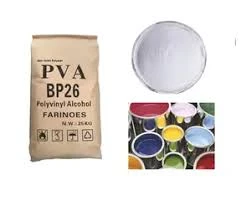Understanding Hydroxypropyl Methyl Cellulose (HPMC) in Chemical Applications
Hydroxypropyl Methyl Cellulose (HPMC) is a versatile cellulose ether derived from natural sources that has garnered significant attention in various industrial applications. Known for its thickening, emulsifying, and film-forming properties, HPMC is particularly valuable in the pharmaceutical, food, cosmetic, and construction industries. This article explores the chemical composition, properties, and applications of HPMC.
Chemical Composition and Properties
HPMC is synthesized through the modification of cellulose, a natural polymer that is abundant in plant cell walls. The process involves substituting a portion of the hydroxyl groups in cellulose with hydroxypropyl and methyl groups, which enhances its solubility in water and physiological compatibility. The chemical formula for HPMC varies as it includes different degrees of substitution, resulting in products with varying viscosity and solubility characteristics.
The degree of hydroxypropyl and methyl substitution affects HPMC's functional properties, such as its gelation ability, viscosity, and thermal stability. HPMC is characterized by a high molecular weight, typically ranging from 86,000 to over 100,000, depending on the specific grade. The viscosity of HPMC solutions can also vary widely, making it suitable for a range of applications from thin solutions to thick gels.
Applications Across Industries
1. Pharmaceutical Applications
In the pharmaceutical industry, HPMC is widely used as an excipient in tablet formulations and controlled-release drug delivery systems. Its ability to form gels and retain moisture makes HPMC an excellent candidate for matrix tablets, where it helps in the gradual release of active pharmaceutical ingredients (APIs). Furthermore, HPMC is often employed as a binder in tablet formulations due to its adhesive properties, improving the compressibility and mechanical integrity of the tablets.
Additionally, HPMC's biocompatibility allows for its use in ocular applications, such as artificial tears and lubricants, providing moisture and comfort to the eyes. The ability to form a protective film makes HPMC an essential ingredient in the production of ophthalmic solutions.
2. Food Industry
chemical hpmc hydroxypropyl methyl cellulose

In the food industry, HPMC serves as a food additive and thickening agent. It is commonly utilized in the production of gluten-free products, where it helps to enhance texture and moisture retention. HPMC is also used in sauces, dressings, and bakery goods to improve viscosity and stability. As a fat replacer, HPMC contributes to the desired mouthfeel without the additional calories, making it a popular choice for health-conscious consumers.
The regulatory status of HPMC as a food ingredient is well-established, and it is generally recognized as safe (GRAS) by the FDA, further solidifying its role in food applications.
3. Cosmetic and Personal Care
In cosmetics and personal care products, HPMC is appreciated for its thickening, stabilizing, and emulsifying properties. It is commonly found in lotions, creams, shampoos, and gels, enhancing product consistency and performance. HPMC can help provide a smooth application and prevent the separation of ingredients, ensuring product stability over time.
Moreover, HPMC is used in formulations for facial masks and peels where its film-forming properties contribute to a desirable aesthetic experience. Its gentle nature and compatibility with skin make it a preferred choice for sensitive skin formulations.
4. Construction Industry
In the construction sector, HPMC plays a crucial role as an additive in cement and mortar formulations. It enhances water retention, improves workability, and increases the adhesive properties of building materials. This is particularly important in applications such as tile adhesives and joint fillers, where consistent performance is essential for durability and structural integrity.
Conclusion
Hydroxypropyl Methyl Cellulose (HPMC) is a unique cellulose derivative that demonstrates remarkable versatility across various industries. From pharmaceuticals and food to cosmetics and construction, its chemical properties enable a wide range of applications, providing benefits such as enhanced stability, improved texture, and prolonged release of active ingredients. As research continues to unveil new formulations and applications, HPMC is likely to remain a key player in both existing and emerging industries. Its safety profile and functionality ensure that it will continue to meet the evolving needs of consumers and manufacturers alike.




